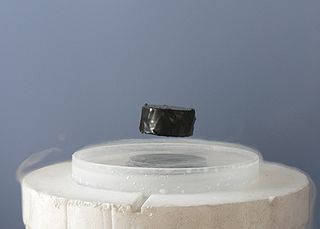 W
WSuperconductivity is a set of physical properties observed in certain materials where electrical resistance vanishes and magnetic flux fields are expelled from the material. Any material exhibiting these properties is a superconductor. Unlike an ordinary metallic conductor, whose resistance decreases gradually as its temperature is lowered even down to near absolute zero, a superconductor has a characteristic critical temperature below which the resistance drops abruptly to zero. An electric current through a loop of superconducting wire can persist indefinitely with no power source.
 W
WIn superconductivity, an Abrikosov vortex is a vortex of supercurrent in a type-II superconductor theoretically predicted by Alexei Abrikosov in 1957. Abrikosov vortices occur generically in the Ginzburg–Landau theory of superconductivity, and can be explicitly demonstrated as solutions to that theory in a general mathematical setting, viz. as vortices in complex line bundles on Riemannian manifolds.
 W
WAlexei Alexeyevich Abrikosov was a Soviet, Russian and American theoretical physicist whose main contributions are in the field of condensed matter physics. He was the co-recipient of the 2003 Nobel Prize in Physics, with Vitaly Ginzburg and Anthony James Leggett, for theories about how matter can behave at extremely low temperatures.
American Superconductor (AMSC) is an American energy technologies company based in Ayer, Massachusetts specializing in the design and manufacture of power systems and superconducting wire. It owns AMSC Windtech in Klagenfurt, Austria.
 W
WAndreev reflection (AR), named after the Russian physicist Alexander F. Andreev, is a type of particle scattering which occurs at interfaces between a superconductor (S) and a normal state material (N). It is a charge-transfer process by which normal current in N is converted to supercurrent in S. Each Andreev reflection transfers a charge 2e across the interface, avoiding the forbidden single-particle transmission within the superconducting energy gap.
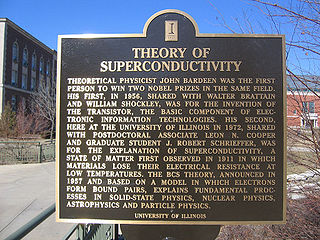 W
WBCS theory or Bardeen–Cooper–Schrieffer theory is the first microscopic theory of superconductivity since Heike Kamerlingh Onnes's 1911 discovery. The theory describes superconductivity as a microscopic effect caused by a condensation of Cooper pairs. The theory is also used in nuclear physics to describe the pairing interaction between nucleons in an atomic nucleus.
 W
WBCS: 50 Years is a review volume edited by Leon Cooper, a 1972 Nobel Laureate in Physics, and Dmitri Feldman of Brown University, first published in 2010.
 W
WBean's critical state model, introduced by C. P. Bean in 1962, gives a macroscopic explanation of the irreversible magnetization behavior (hysteresis) of hard Type-II superconductors.
 W
WA Bechgaard salt is any one of a number of organic charge-transfer complexes that exhibit superconductivity at low temperatures. They are named for chemist Klaus Bechgaard, who was one of the first scientists to synthesize them and demonstrate their superconductivity with the help of physicist Denis Jérôme. Most Bechgaard salt superconductors are extremely low temperature, and lose superconductivity above the 1–2 K range, although the most successful compound in this class superconducts up to almost 12 K.
 W
WIn quantum computing, a charge qubit is a qubit whose basis states are charge states. In superconducting quantum computing, a charge qubit is formed by a tiny superconducting island coupled by a Josephson junction to a superconducting reservoir. The state of the qubit is determined by the number of Cooper pairs which have tunneled across the junction. In contrast with the charge state of an atomic or molecular ion, the charge states of such an "island" involve a macroscopic number of conduction electrons of the island. The quantum superposition of charge states can be achieved by tuning the gate voltage U that controls the chemical potential of the island. The charge qubit is typically read-out by electrostatically coupling the island to an extremely sensitive electrometer such as the radio-frequency single-electron transistor.
 W
WLeon N. Cooper is an American physicist and Nobel Prize laureate who, with John Bardeen and John Robert Schrieffer, developed the BCS theory of superconductivity. He is also the namesake of the Cooper pair and co-developer of the BCM theory of synaptic plasticity.
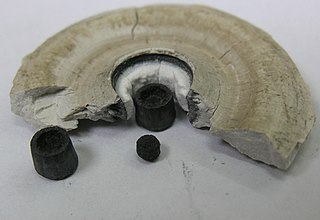 W
WCovalent superconductors are superconducting materials where the atoms are linked by covalent bonds. The first such material was boron-doped synthetic diamond grown by the high-pressure high-temperature (HPHT) method. The discovery had no practical importance, but surprised most scientists as superconductivity had not been observed in covalent semiconductors, including diamond and silicon.
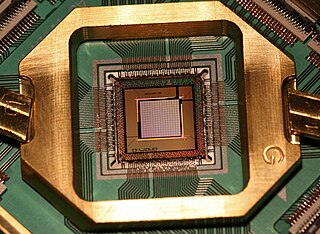 W
WThe Josephson junction count is the number of Josephson junctions on a superconducting integrated circuit chip. Josephson junctions are active circuit elements in superconducting circuits. The Josephson junction count is a measure of circuit or device complexity, similar to the transistor count used for semiconductor integrated circuits.
 W
WFlux pinning is the phenomenon where a superconductor is pinned in space above a magnet. The superconductor must be a type-II superconductor because type-I superconductors cannot be penetrated by magnetic fields. Some type-I superconductors can experience the effects of flux pinning if they are thin enough. If the material's thickness is comparable to the London penetration depth, the magnetic field can pass through the material. The act of magnetic penetration is what makes flux pinning possible. At higher magnetic fields the superconductor allows magnetic flux to enter in quantized packets surrounded by a superconducting current vortex. These sites of penetration are known as flux tubes. The number of flux tubes per unit area is proportional to the magnetic field with a constant of proportionality equal to the magnetic flux quantum. On a simple 76 millimeter diameter, 1-micrometer thick disk, next to a magnetic field of 28 kA/m, there are approximately 100 billion flux tubes that hold 70,000 times the superconductor's weight. At lower temperatures the flux tubes are pinned in place and cannot move. This pinning is what holds the superconductor in place thereby allowing it to levitate. This phenomenon is closely related to the Meissner effect, though with one crucial difference — the Meissner effect shields the superconductor from all magnetic fields causing repulsion, unlike the pinned state of the superconductor disk which pins flux, and the superconductor in place.
 W
WIn quantum computing, more specifically in superconducting quantum computing, flux qubits are micrometer sized loops of superconducting metal that is interrupted by a number of Josephson junctions. These devices function as quantum bits. The flux qubit was first proposed by Terry P. Orlando et al. at MIT in 1999 and fabricated shortly thereafter. During fabrication, the Josephson junction parameters are engineered so that a persistent current will flow continuously when an external magnetic flux is applied. Only an integer number of flux quanta are allowed to penetrate the superconducting ring, resulting in clockwise or counter-clockwise mesoscopic supercurrents in the loop to compensate a non-integer external flux bias. When the applied flux through the loop area is close to a half integer number of flux quanta, the two lowest energy eigenstates of the loop will be a quantum superposition of the clockwise and counter-clockwise currents.The two lowest energy eigenstates differ only by the relative quantum phase between the composing current-direction states. Higher energy eigenstates correspond to much larger (macroscopic) persistent currents, that induce an additional flux quantum to the qubit loop, thus are well separated energetically from the lowest two eigenstates. This separation, known as the "qubit non linearity" criteria, allows operations with the two lowest eigenstates only, effectively creating a two level system. Usually, the two lowest eigenstates will serve as the computational basis for the logical qubit.
 W
WFrozen mirror image method is an extension of the method of images for magnet-superconductor systems that has been introduced by Alexander Kordyuk in 1998 to take into account the magnetic flux pinning phenomenon. The method gives a simple representation of the magnetic field distribution generated by a magnet outside an infinitely flat surface of a perfectly hard type-II superconductor in more general field cooled (FC) case, i.e. when the superconductor goes into superconducting state been already exposed to the magnetic field. The difference from the mirror image method, which deals with a perfect type-I superconductor, is that the perfectly hard superconductor screens the variation of the external magnetic field rather than the field itself.
 W
WIvar Giaever is a Norwegian-American physicist who shared the Nobel Prize in Physics in 1973 with Leo Esaki and Brian Josephson "for their discoveries regarding tunnelling phenomena in solids". Giaever's share of the prize was specifically for his "experimental discoveries regarding tunnelling phenomena in superconductors". Giaever is a professor emeritus at the Rensselaer Polytechnic Institute and the president of the company Applied Biophysics.
 W
WVitaly Lazarevich Ginzburg, ForMemRS was a Soviet and Russian theoretical physicist, astrophysicist, Nobel laureate, a member of the Soviet and Russian Academies of Sciences and one of the fathers of the Soviet hydrogen bomb. He was the successor to Igor Tamm as head of the Department of Theoretical Physics of the Lebedev Physical Institute of the Russian Academy of Sciences (FIAN), and an outspoken atheist.
 W
WSuperconductivity is the phenomenon of certain materials exhibiting zero electrical resistance and the expulsion of magnetic fields below a characteristic temperature. The history of superconductivity began with Dutch physicist Heike Kamerlingh Onnes's discovery of superconductivity in mercury in 1911. Since then, many other superconducting materials have been discovered and the theory of superconductivity has been developed. These subjects remain active areas of study in the field of condensed matter physics.
 W
WGilles Holst was a Dutch physicist, known worldwide for his invention in 1932 of the low-pressure sodium lamp.
 W
WIn superconductivity, Homes's law is an empirical relation that states that a superconductor's critical temperature (Tc) is proportional to the strength of the superconducting state for temperatures well below Tc close to zero temperature multiplied by the electrical resistivity measured just above the critical temperature. In cuprate high-temperature superconductors the relation follows the form,
 W
WThe Josephson effect is the phenomenon of supercurrent, a current that flows indefinitely long without any voltage applied, across a device known as a Josephson junction (JJ), which consists of two or more superconductors coupled by a weak link. The weak link can consist of a thin insulating barrier, a short section of non-superconducting metal (S-N-S), or a physical constriction that weakens the superconductivity at the point of contact (S-s-S).
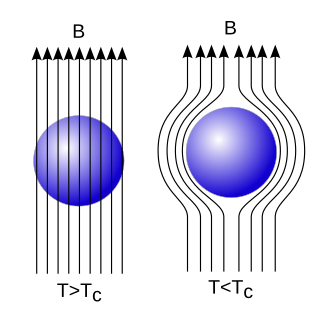 W
WThe London equations, developed by brothers Fritz and Heinz London in 1935, are constitutive relations for a superconductor relating its superconducting current to electromagnetic fields in and around it. Whereas Ohm's law is the simplest constitutive relation for an ordinary conductor, the London equations are the simplest meaningful description of superconducting phenomena, and form the genesis of almost any modern introductory text on the subject. A major triumph of the equations is their ability to explain the Meissner effect, wherein a material exponentially expels all internal magnetic fields as it crosses the superconducting threshold.
 W
WThe Meissner effect is the expulsion of a magnetic field from a superconductor during its transition to the superconducting state when it is cooled below the critical temperature. The German physicists Walther Meissner and Robert Ochsenfeld discovered this phenomenon in 1933 by measuring the magnetic field distribution outside superconducting tin and lead samples. The samples, in the presence of an applied magnetic field, were cooled below their superconducting transition temperature, whereupon the samples cancelled nearly all interior magnetic fields. They detected this effect only indirectly because the magnetic flux is conserved by a superconductor: when the interior field decreases, the exterior field increases. The experiment demonstrated for the first time that superconductors were more than just perfect conductors and provided a uniquely defining property of the superconductor state. The ability for the expulsion effect is determined by the nature of equilibrium formed by the neutralization within the unit cell of a superconductor.
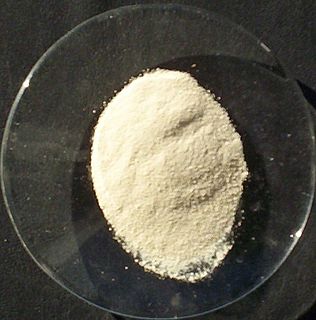 W
WMixed conductors, also known as mixed ion-electron conductors (MIEC), are a single-phase material that has significant conduction ionically and electronically. Due to the mixed conduction, a formally neutral species can transport in a solid and therefore mass storage and redistribution are enabled. Mixed conductors are well known in conjugation with high-temperature superconductivity and are able to capacitate rapid solid-state reactions.
 W
WProximity effect or Holm-Meissner effect is a term used in the field of superconductivity to describe phenomena that occur when a superconductor (S) is placed in contact with a "normal" (N) non-superconductor. Typically the critical temperature of the superconductor is suppressed and signs of weak superconductivity are observed in the normal material over mesoscopic distances. The proximity effect is known since the pioneering work by R. Holm and W. Meissner. They have observed zero resistance in SNS pressed contacts, in which two superconducting metals are separated by a thin film of a non-superconducting metal. The discovery of the supercurrent in SNS contacts is sometimes mistakenly attributed to Brian Josephson's 1962 work, yet the effect was known long before his publication and was understood as the proximity effect.
 W
WA Quantum Flux Parametron (QFP) is a digital logic implementation technology based on superconducting Josephson junctions. QFP's were invented by Eiichi Goto at the University of Tokyo as an improvement over his earlier parametron based digital logic technology, which did not use superconductivity effects or Josephson junctions. The Josephson junctions on QFP integrated circuits to improve speed and energy efficiency enormously over the parametrons.
 W
WIn physics, a quantum vortex represents a quantized flux circulation of some physical quantity. In most cases, quantum vortices are a type of topological defect exhibited in superfluids and superconductors. The existence of quantum vortices was first predicted by Lars Onsager in 1949 in connection with superfluid helium. Onsager reasoned that quantisation of vorticity is a direct consequence of the existence of a superfluid order parameter as a spatially continuous wavefunction. Onsager also pointed out that quantum vortices describe the circulation of superfluid and conjectured that their excitations are responsible for superfluid phase transitions. These ideas of Onsager were further developed by Richard Feynman in 1955 and in 1957 were applied to describe the magnetic phase diagram of type-II superconductors by Alexei Alexeyevich Abrikosov. In 1935 Fritz London published a very closely related work on magnetic flux quantization in superconductors. London's fluxoid can also be viewed as a quantum vortex.
 W
WScanning SQUID microscopy is a technique where a superconducting quantum interference device (SQUID) is used to image surface magnetic field strength with micrometre scale resolution. A tiny SQUID is mounted onto a tip which is then rastered near the surface of the sample to be measured. As the SQUID is the most sensitive detector of magnetic fields available and can be constructed at submicrometre widths via lithography, the scanning SQUID microscope allows magnetic fields to be measured with unparalleled resolution and sensitivity. The first scanning SQUID microscope was built in 1992 by Black et al. Since then the technique has been used to confirm unconventional superconductity in several high-temperature superconductors including YBCO and BSCCO compounds.
 W
WScanning SQUID microscopy is a technique where a superconducting quantum interference device (SQUID) is used to image surface magnetic field strength with micrometre scale resolution. A tiny SQUID is mounted onto a tip which is then rastered near the surface of the sample to be measured. As the SQUID is the most sensitive detector of magnetic fields available and can be constructed at submicrometre widths via lithography, the scanning SQUID microscope allows magnetic fields to be measured with unparalleled resolution and sensitivity. The first scanning SQUID microscope was built in 1992 by Black et al. Since then the technique has been used to confirm unconventional superconductity in several high-temperature superconductors including YBCO and BSCCO compounds.
 W
WThe Spallation Neutron Source (SNS) is an accelerator-based neutron source facility in the U.S. that provides the most intense pulsed neutron beams in the world for scientific research and industrial development. Each year, this facility hosts hundreds of researchers from universities, national laboratories, and industry, who conduct basic and applied research and technology development using neutrons. SNS is part of Oak Ridge National Laboratory, which is managed by UT-Battelle for the United States Department of Energy (DOE). SNS is a DOE Office of Science user facility, and it is open to scientists and researchers from all over the world.
 W
WA SQUID is a very sensitive magnetometer used to measure extremely subtle magnetic fields, based on superconducting loops containing Josephson junctions.
 W
WA superconducting magnet is an electromagnet made from coils of superconducting wire. They must be cooled to cryogenic temperatures during operation. In its superconducting state the wire has no electrical resistance and therefore can conduct much larger electric currents than ordinary wire, creating intense magnetic fields. Superconducting magnets can produce greater magnetic fields than all but the strongest non-superconducting electromagnets and can be cheaper to operate because no energy is dissipated as heat in the windings. They are used in MRI machines in hospitals, and in scientific equipment such as NMR spectrometers, mass spectrometers, fusion reactors and particle accelerators. They are also used for levitation, guidance and propulsion in a magnetic levitation (maglev) railway system being constructed in Japan.
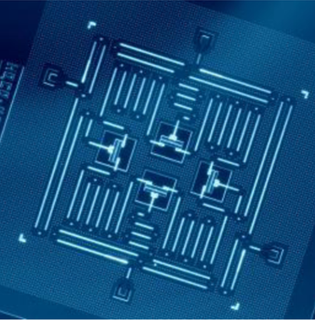 W
WSuperconducting quantum computing is an implementation of a quantum computer in superconducting electronic circuits. Research in superconducting quantum computing is conducted by Google, IBM, IMEC, BBN Technologies, Rigetti, and Intel. as of May 2016, up to nine fully controllable qubits are demonstrated in a 1D array, up to sixteen in a 2D architecture.
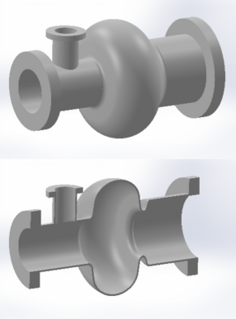 W
WSuperconducting radio frequency (SRF) science and technology involves the application of electrical superconductors to radio frequency devices. The ultra-low electrical resistivity of a superconducting material allows an RF resonator to obtain an extremely high quality factor, Q. For example, it is commonplace for a 1.3 GHz niobium SRF resonant cavity at 1.8 kelvins to obtain a quality factor of Q=5×1010. Such a very high Q resonator stores energy with very low loss and narrow bandwidth. These properties can be exploited for a variety of applications, including the construction of high-performance particle accelerator structures.
 W
WSuperdiamagnetism is a phenomenon occurring in certain materials at low temperatures, characterised by the complete absence of magnetic permeability and the exclusion of the interior magnetic field.
 W
WIn quantum computing, and more specifically in superconducting quantum computing, a transmon is a type of superconducting charge qubit that was designed to have reduced sensitivity to charge noise. The transmon was developed by Robert J. Schoelkopf, Michel Devoret, Steven M. Girvin and their colleagues at Yale University in 2007. Its name is an abbreviation of the term transmission line shunted plasma oscillation qubit; one which consists of a Cooper-pair box "where the two superconductors are also capacitatively shunted in order to decrease the sensitivity to charge noise, while maintaining a sufficient anharmonicity for selective qubit control".
 W
WTwistronics is the study of how the angle between layers of two-dimensional materials can change their electrical properties. Materials such as bilayer graphene have been shown to have vastly different electronic behavior, ranging from non-conductive to superconductive, that depends sensitively on the angle between the layers. The term was first introduced by the research group of Efthimios Kaxiras at Harvard University in their theoretical treatment of graphene superlattices.
 W
WIn superconductivity, a type-II superconductor is a superconductor which exhibits an intermediate phase of mixed ordinary and superconducting properties at intermediate temperature and fields above the superconducting phases. It also features the formation of magnetic field vortices with an applied external magnetic field. This occurs above a certain critical field strength Hc1. The vortex density increases with increasing field strength. At a higher critical field Hc2, superconductivity is destroyed. Type-II superconductors do not exhibit a complete Meissner effect.
 W
WThe vortex state is a thermodynamic state of a material, characterized by co-existing resistive and superconducting sub-regions which form cores roughly 300 nm across. It is the state transitioned to by Type II superconductors when an external magnetic field first overcomes the Meissner current at the material's boundary.
 W
WZlatko Boško Tešanović was an Yugoslav-American theoretical condensed-matter physicist, whose work focused mainly on the high-temperature superconductors (HTS) and related materials.